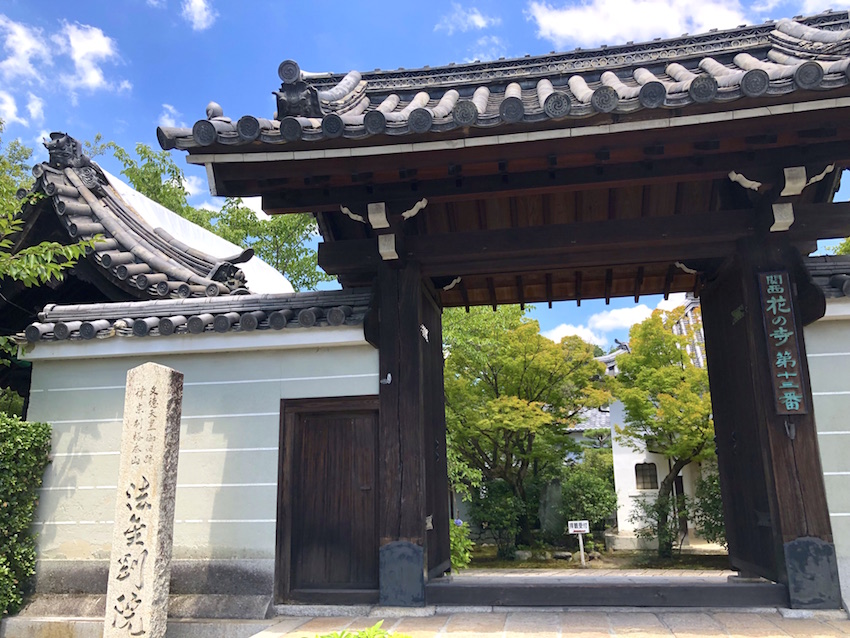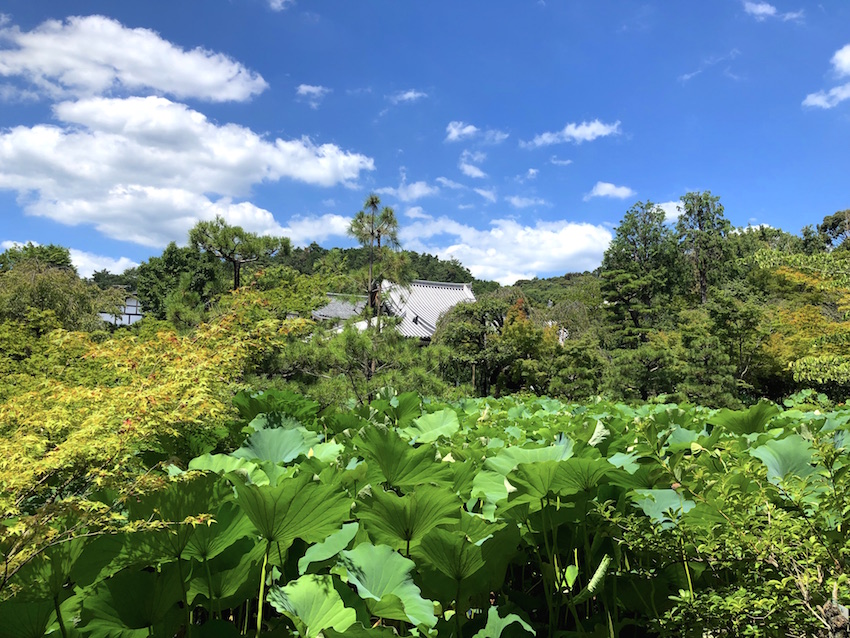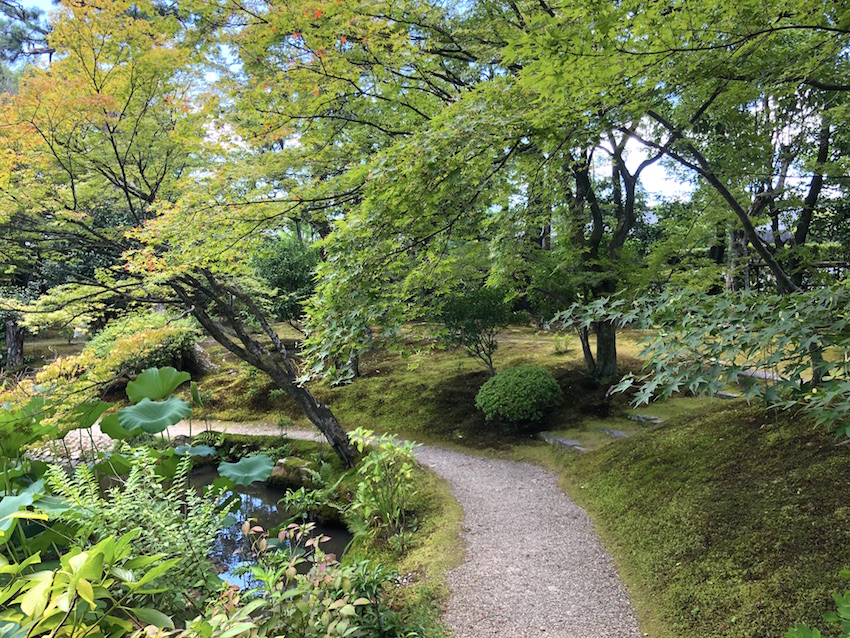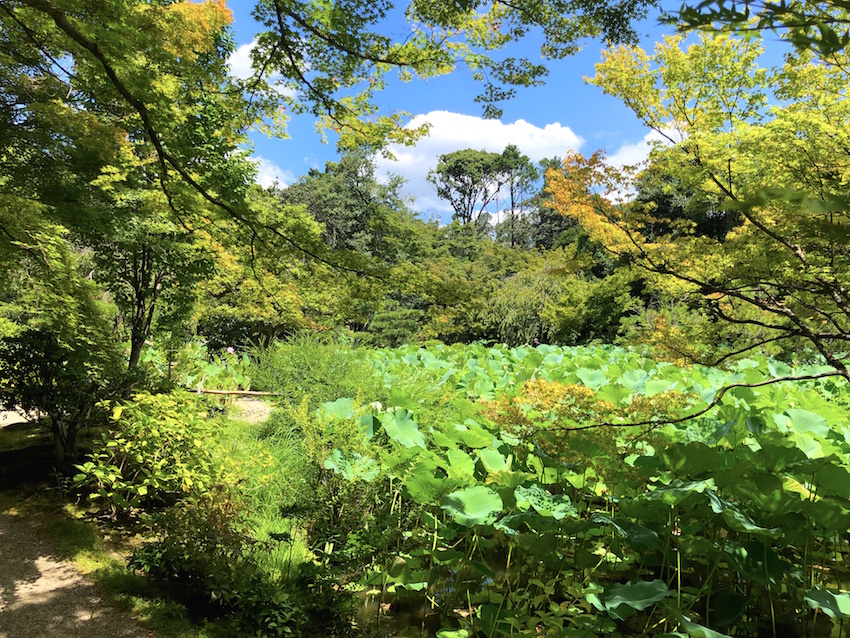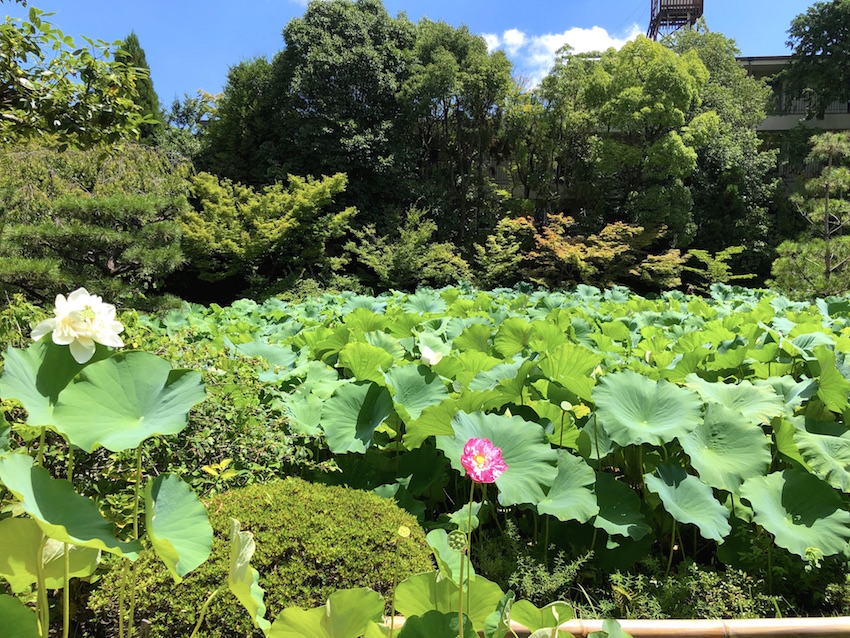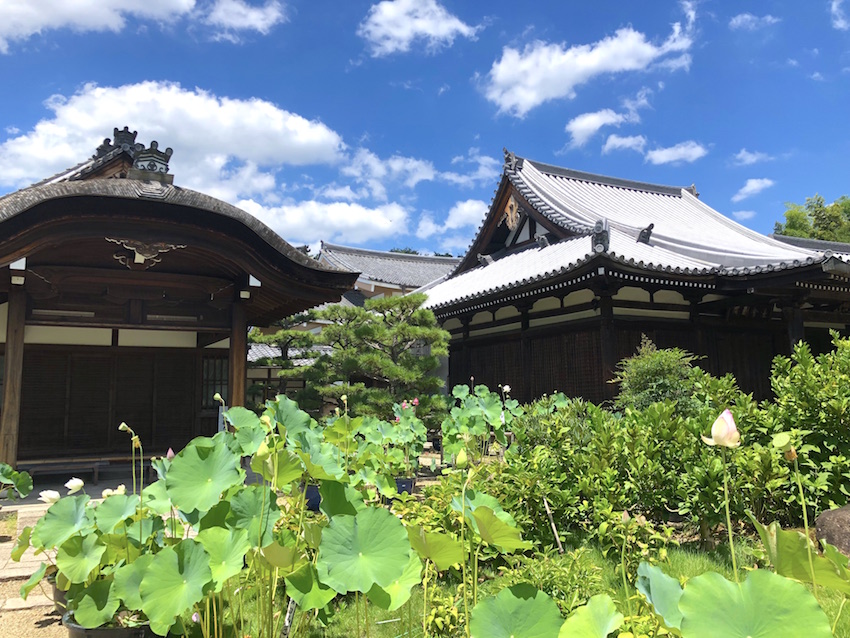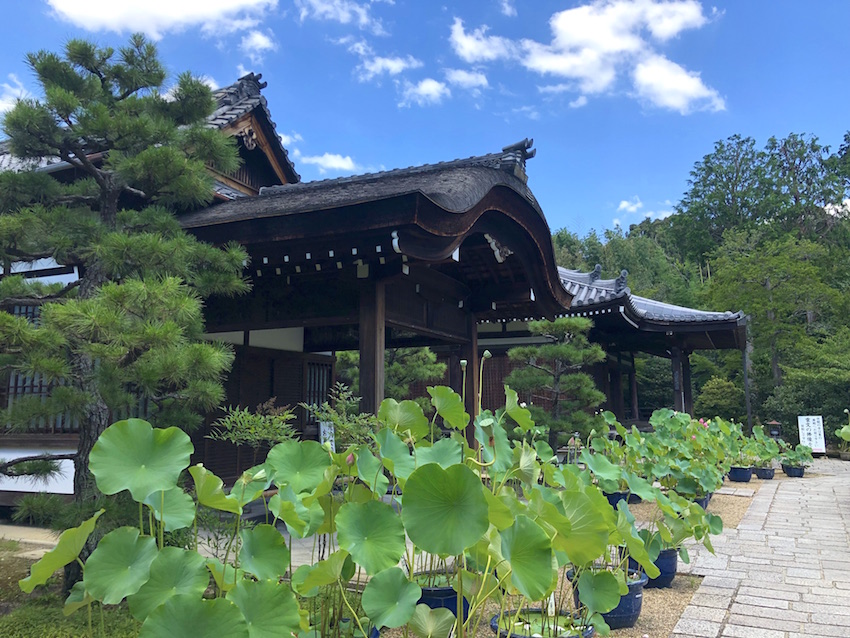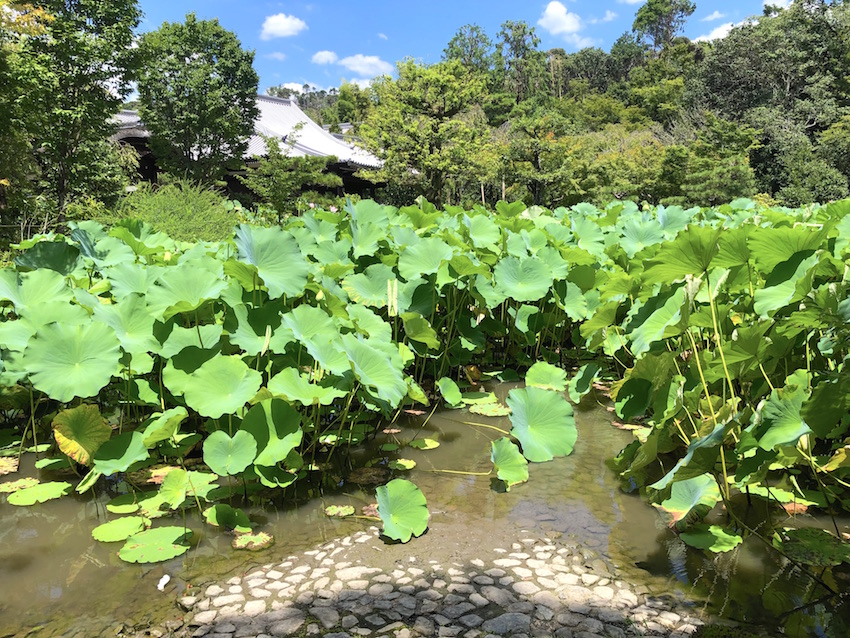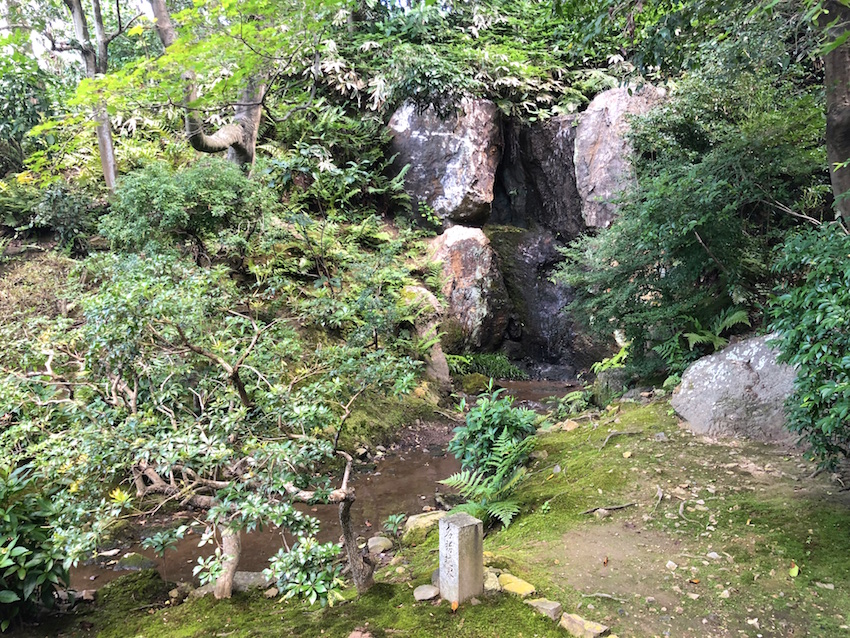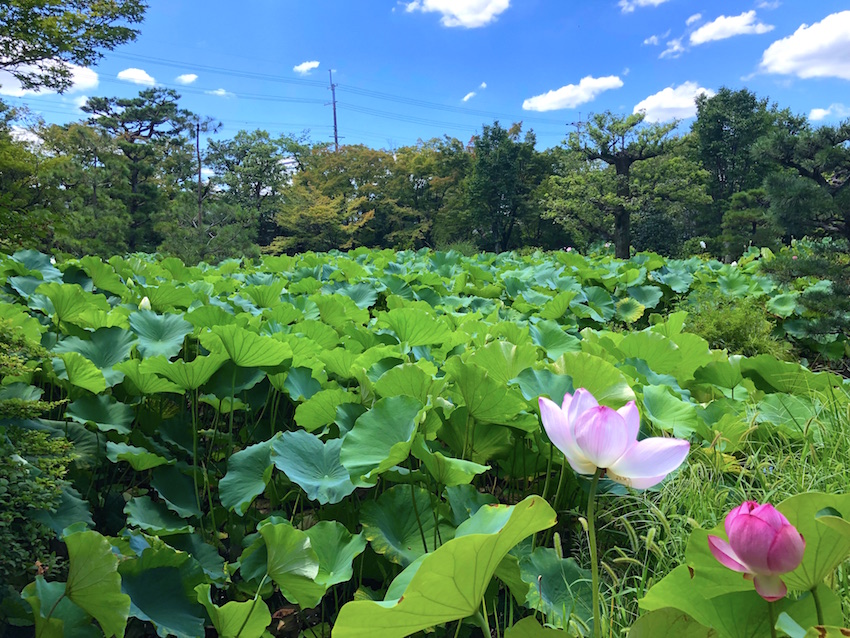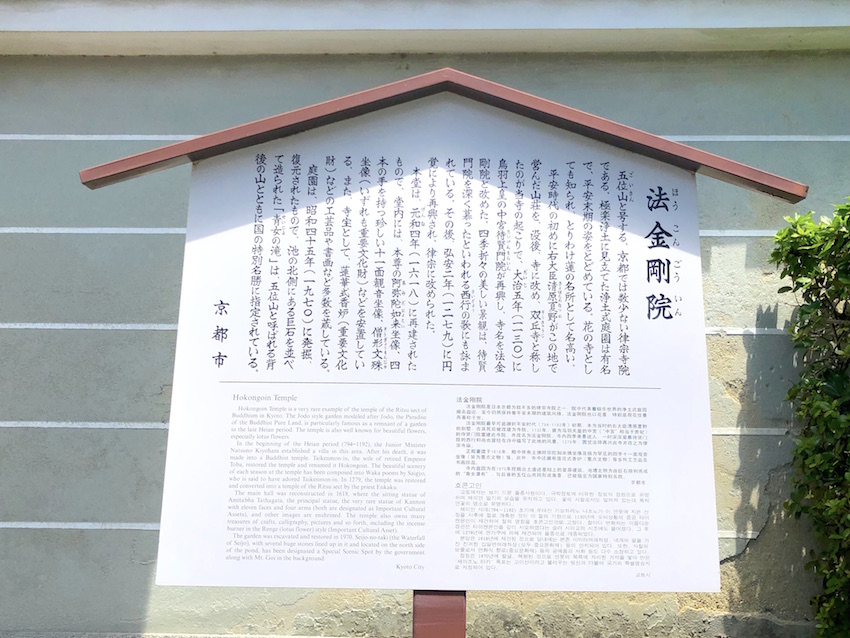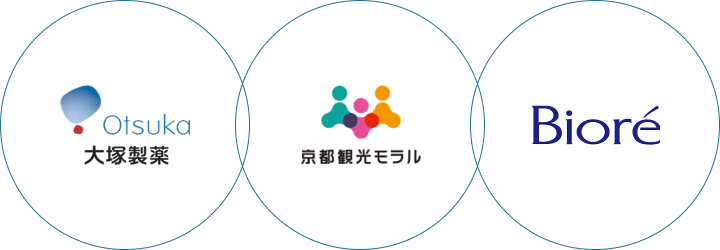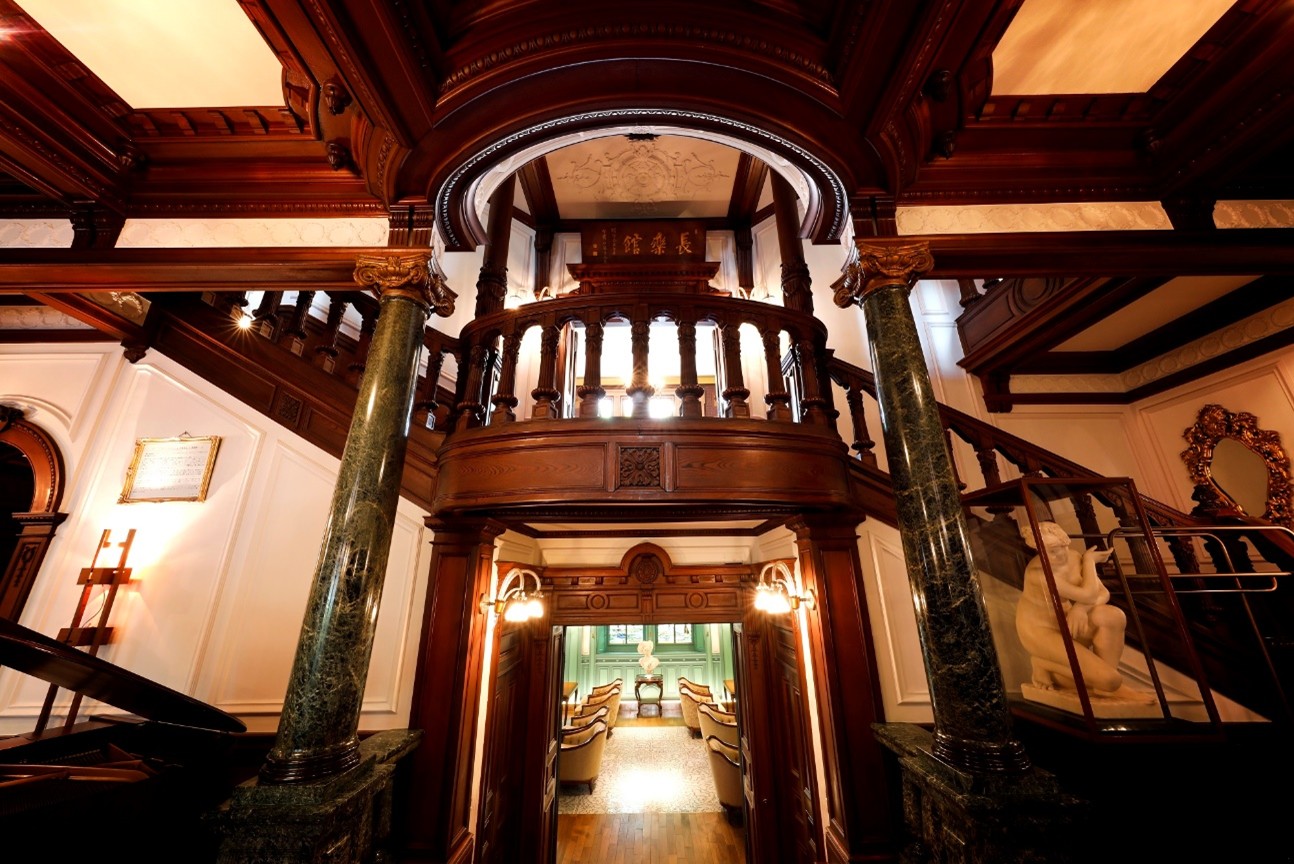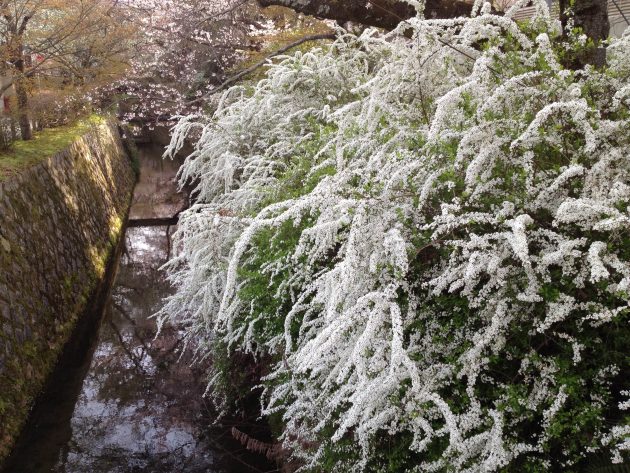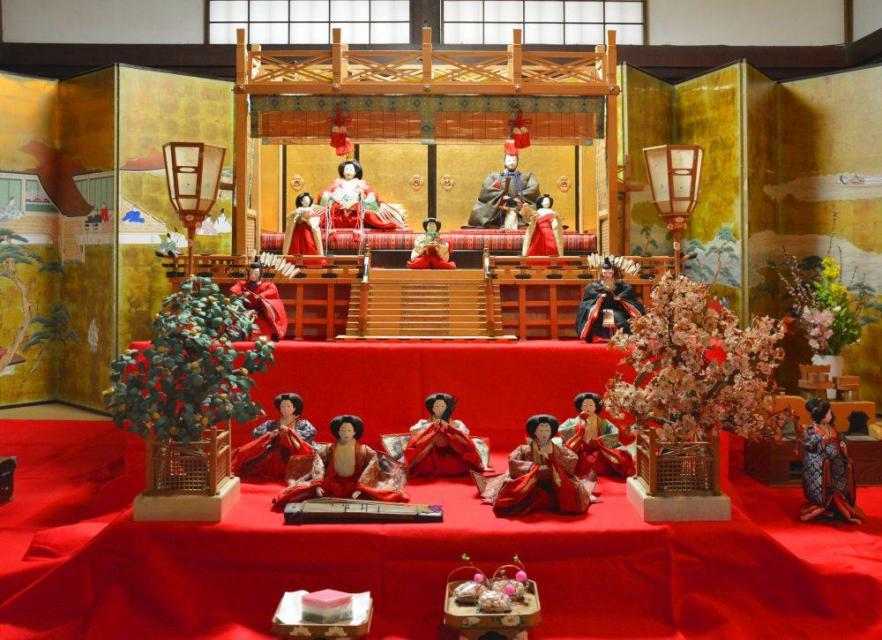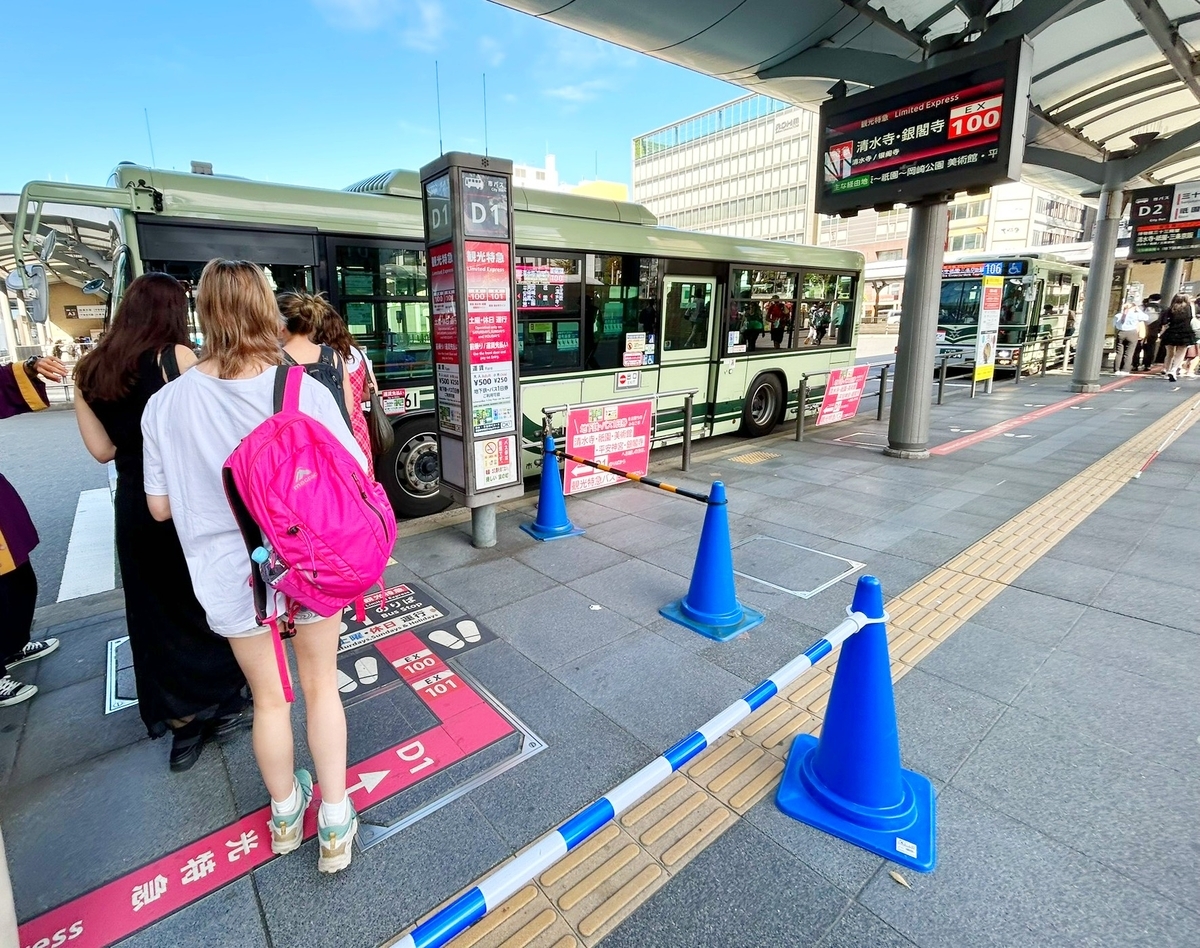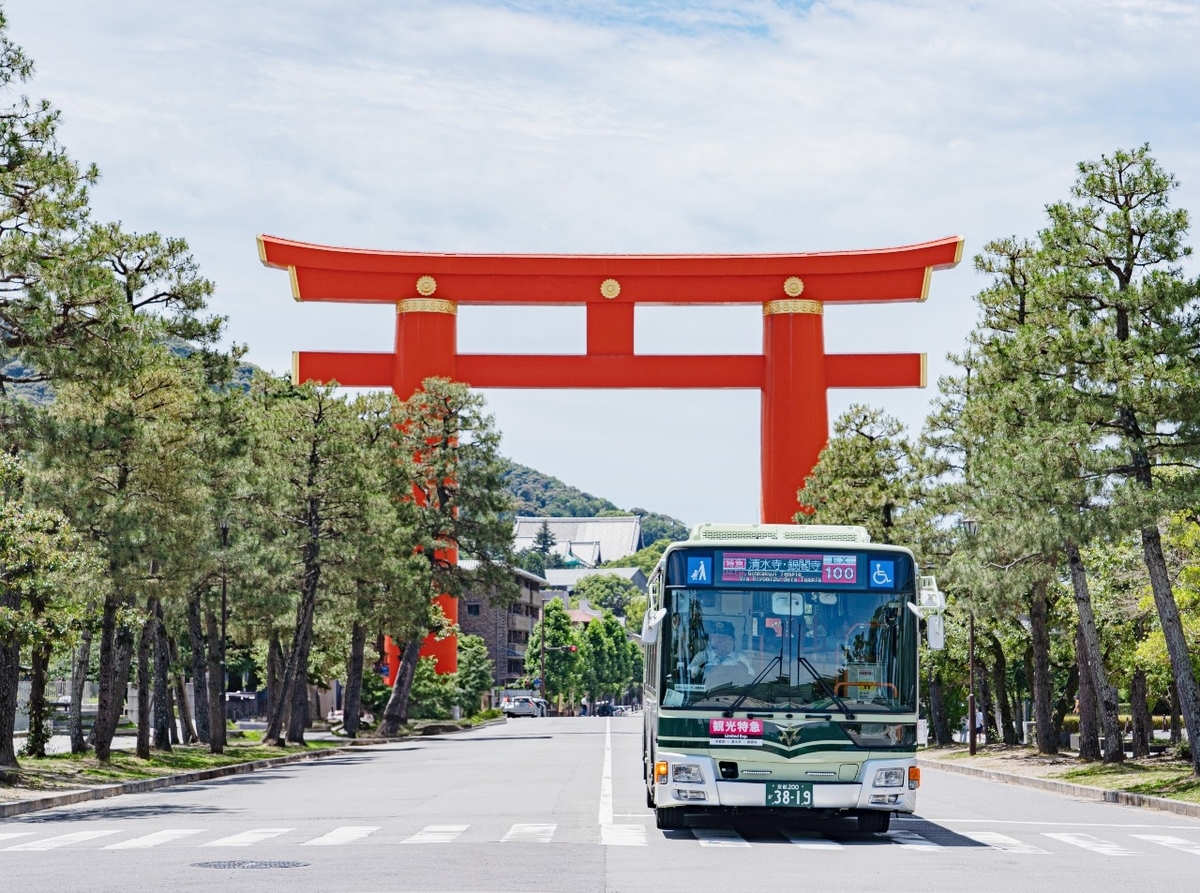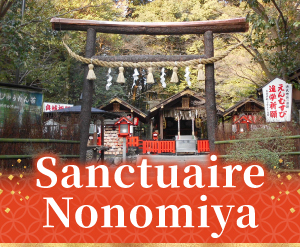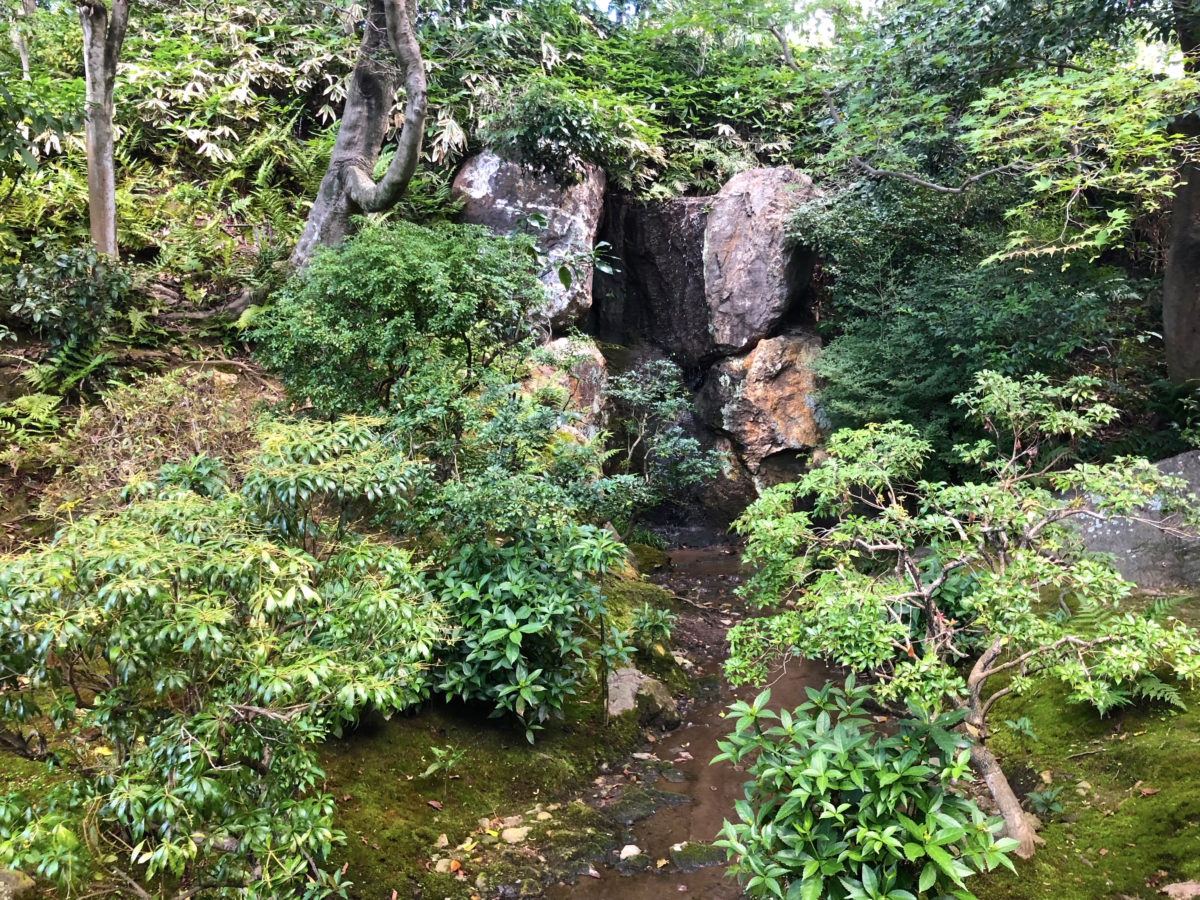
À propos du jardin du temple Hokongo-in
Le jardin de style Jodo (conçu pour représenter la Terre Pure bouddhiste), créé vers le XIIe siècle au temple Goisan Hokongo-in, temple affilié au temple Toshodai-ji de l'école Ritsu, a été classé Site national spécial de beauté pittoresque. Également réputé pour les lotus qui fleurissent sur son étang en juillet, ce « Temple du Lotus » est classé 13e parmi les « temples fleuris » de la région du Kansai.
C'était l'été 2019, ma première visite là-bas depuis environ cinq ans ! (Il ne restait alors que quelques fleurs de lotus.)
La longue histoire du temple Hokongo-in remonte aux alentours de 830. Vers 794, le ministre de la Droite (Udaijin), Kiyohara no Natsuno, y possédait une villa de montagne. Après sa mort, la villa devint le temple Narabigaoka-dera (la montagne avait alors été baptisée mont Goisan par l'empereur Nimmyo). En 858, l'empereur Montoku le rebaptisa temple Tenan-ji, qui y ajouta des salles et des structures supplémentaires. En 1130, Taikemmon-in, mère de l'empereur Go-Shirakawa et impératrice consort de l'empereur Toba, le restaura sous le nom de temple Hokongo-in.
Parallèlement à cette restauration, Taikemmon-in ordonna la création de ce jardin Jodo, conçu dans le style chisen-kaiyu autour d'un étang central. Bien que je n'aie jamais pu pleinement saisir le style chisen-kaiyu du jardin en raison des fleurs de lotus qui l'entouraient lors de mes deux visites… Seijo-no-Taki, au fond du jardin, réputée pour être la plus ancienne cascade artificielle du Japon, fut créée par les moines Rinken et Joi alignant d'énormes pierres. Site historique dont les traces subsistent encore aujourd'hui, où l'on sait précisément qui l'a voulu et qui l'a créé, ce jardin est un trésor rare. C'est pourquoi Seijo-no-Taki, situé dans le temple Hokongo-in, a été désigné, avec le mont Goisan, site national spécial de beauté pittoresque.
Le jardin actuel a été fouillé et reconstruit entre les années 1960 et 1970. Il semble aujourd'hui plus petit et moins bâti qu'à son apogée, en raison du chaos de la guerre et des catastrophes naturelles. La vue sur les quartiers du prêtre et la salle de culte face à l'étang, reconstruits au XVIIe siècle, est néanmoins magnifique.
Ce jardin présente également plusieurs biens culturels importants classés au niveau national, datant de la fin du XVIIIe siècle au milieu du XIVe siècle. En commençant par le point central du jardin, une statue assise d'Amitabha, les visiteurs peuvent également admirer Juichimen Kanzeon Bosatsu (la déesse bouddhiste de la Miséricorde à 11 têtes), une statue de Monju Bosatsu sous les traits d'un moine et une statue de Jizo Bosatsu (le protecteur des enfants décédés). Outre les fleurs de lotus, de magnifiques érables japonais verdoyants entourent l'étang. J'aimerais donc aussi venir ici en automne pour admirer les couleurs de ses feuilles !
(J'ai visité en juillet 2014 et en août 2019. Les informations ci-dessous sont exactes à la date de mes visites. Veuillez consulter les sites Web officiels concernés pour obtenir les informations les plus récentes.)
Une image du pic de floraison
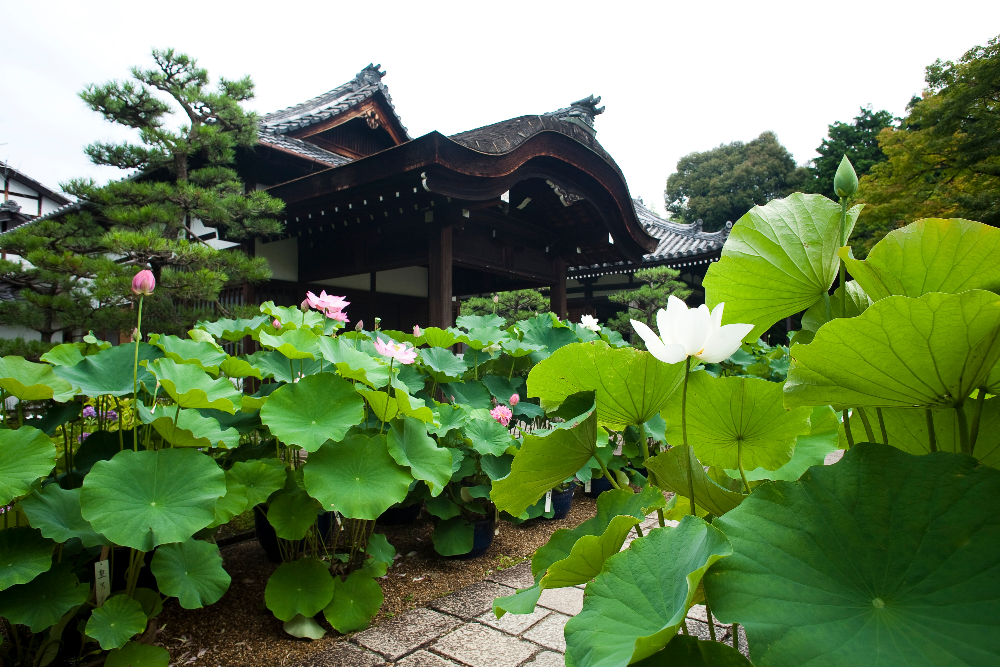
Photo : Temple Hokongo-in
Instructions: 49 Hanazono Oginocho Ukyo-ku, Kyoto-shi, Kyoto-fu 616-8044
Tél.: +81-75-461-9428
Site web: Temple Hokongo-in

